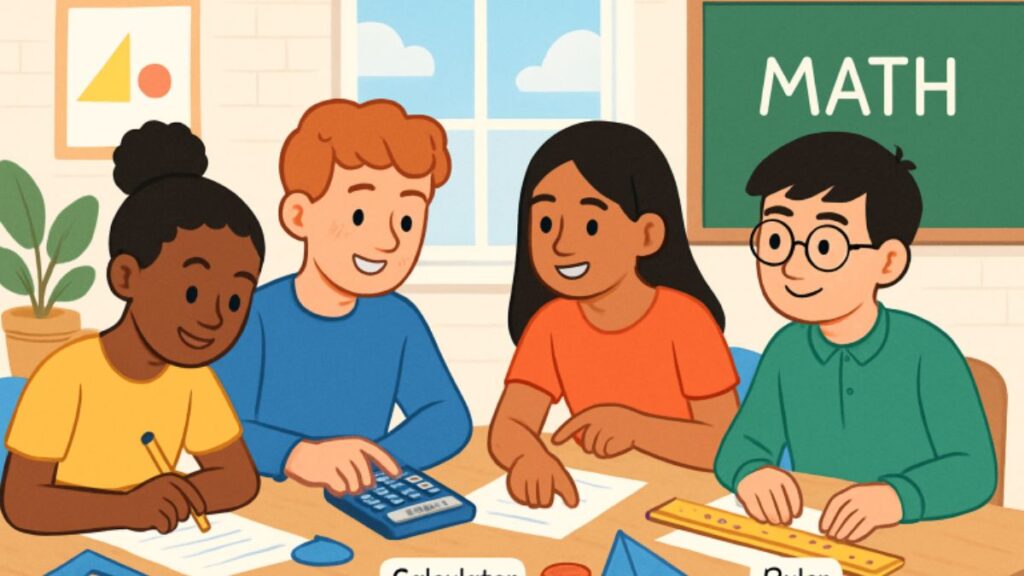Innovative teaching strategies are transforming mathematics education, making it more engaging and accessible to students from diverse backgrounds. As schools shift away from rigid methods, educators are exploring new ways to unlock students’ mathematical potential, ensuring the next generation is both numerate and creative. Those preparing for a career in teaching can also benefit from programs like math secondary education, which equip educators with skills to inspire and engage today’s learners.
In today’s classrooms, math has evolved beyond rote memorization and procedural tasks, incorporating creative methods that foster deeper learning, critical thinking, and a greater enthusiasm for the subject. As teachers try to reach every learner, they turn to techniques that leverage art, technology, and real-life connections, all of which help demystify math and show its value in everyday life. Teachers now recognize that students learn best when they see the relevance of math, interact with peers, and use tools that fit their learning styles. By making mathematics meaningful, educators not only improve achievement but also nurture curiosity and a lifelong appreciation for the subject. Schools and education specialists emphasize the importance of hands-on, collaborative, and tech-enhanced activities to ensure mathematical concepts stick and make sense across disciplines. This approach also helps support a growth mindset, showing students they can excel regardless of their starting point.
Integrating Art and Mathematics
One of the most effective ways to spark student interest in mathematics is through the arts. Whether it’s geometric murals, origami, or tessellation projects, blending visual creativity with mathematical principles makes abstract concepts concrete and memorable. Students can grasp concepts such as symmetry, spatial reasoning, and proportions by actively creating artwork. Activities like designing math-based murals, for example, encourage collaboration and highlight cross-curricular connections, making math more than just numbers on a page. Many educators have found that students who struggle with traditional math instruction find success and confidence when they view it through an artistic lens.
Gamification and Math Games
Math games and gamified lessons are increasingly popular tools for engaging students and enhancing problem-solving skills. When students play interactive games, whether physical board games, digital apps, or classroom contests, they benefit from instant feedback, increased motivation, and a safe space to experiment with strategies. Gamification can turn everyday math practice into an adventure, rewarding persistence, encouraging risk-taking, and fostering a healthy sense of competition. Digital platforms like Prodigy and Kahoot! Offer curated math games for every grade level, while classics like Sudoku and tangrams reinforce foundational skills in a playful format. Research consistently shows that students who participate in math games demonstrate stronger numeracy and greater enjoyment of math topics.
Technology Integration
Modern classrooms leverage technology not just as a supplement, but as an essential tool for teaching mathematics. From interactive whiteboards and graphing calculators to online simulations and specialized math software, technology personalizes the learning process and makes even the most complex concepts more tangible. Educational apps adapt to individual pace and skill levels, helping to close learning gaps and drive mastery. Virtual manipulatives enable students to experiment with shapes, graphs, and equations in real time. As technology continues to evolve, new possibilities emerge for educators to differentiate instruction and engage students in dynamic ways.
Collaborative and Cooperative Learning
Math is inherently social; students learn best when they have the opportunity to discuss ideas, test reasoning, and offer peer support. Group problem-solving, partner activities, and math circles provide platforms for this interaction, giving students ownership over their learning. Through collaboration, learners develop communication skills, deepen their understanding by explaining their thinking, and can approach problems from multiple perspectives. This method fosters a supportive classroom community, reducing math anxiety and enabling even the most reserved students to participate actively.
Real-World Applications
Bringing real-life scenarios into the math classroom helps students see the relevance of what they’re learning and understand how math is woven into daily life. Teachers can design projects that allow students to calculate discounts while shopping, analyze data from local weather patterns, or plan school events within set budgets. Authentic problem-solving activities demonstrate why math matters and spark curiosity, helping students connect concepts to interests and future aspirations. Incorporating current events, environmental topics, and financial literacy into lessons further demonstrates the importance and pervasiveness of mathematics.
Visual Representations and Graphic Organizers
Visual tools, such as charts, graphs, number lines, and mind maps, are powerful aids for making sense of mathematical concepts. Graphic organizers help break down complex problems into manageable steps, clarify relationships, and highlight patterns. Visuals also support memory retention by helping learners see mathematics in new ways and by providing reference tools for review. Teachers often use Venn diagrams, flowcharts, and visual models to represent concepts ranging from probability to algebraic processes, making abstract topics more accessible and less intimidating.
Professional Development for Educators
Continued professional growth is crucial for teachers seeking to incorporate innovative teaching practices into their classrooms. Workshops, online courses, and collaborative learning communities connect educators with fresh ideas, evidence-based strategies, and emerging technology. Programs dedicated to advancing mathematical discourse and integrating the latest research support teachers in cultivating a classroom environment that values critical thinking and creativity. Professional development not only benefits teachers but also directly impacts student success by keeping instruction current, relevant, and engaging.
Conclusion
Embracing creative approaches in teaching mathematics transforms classrooms into vibrant learning spaces where students discover the beauty, utility, and relevance of math. Blending art, technology, games, and real-world scenarios enables educators to reach a broader range of learners and foster a deep, lasting understanding of mathematical concepts. As educators continue to innovate and grow in their practice, today’s students are poised to develop both the skills and the mindset needed to thrive in a complex, ever-changing world.






